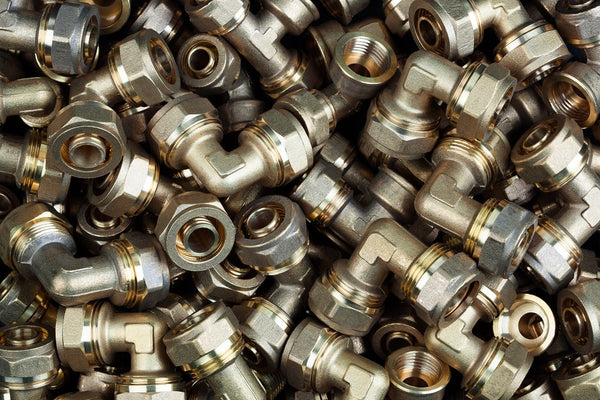
Are you contemplating a new air zone HVAC system? The debate comes down to VAV vs. VVT HVAC system selections - both of which are great choices. While both VAV (variable air volume) and VVT (variable volume and temperature) help better cut down on utility costs than CAV (constant air volume), there are a few differences and considerations for both you’ll want to know before making the final decision.
To help you with your HVAC VVT vs. VAV debate, we are taking a look at each to ensure a more informed purchase.
Shop for HVAC spare parts, dampers, and controllers now at Blackhawk Supply store!
HVAC SUPPLIES FOR SALEAir Terminal Unit
An air terminal unit, also known as ATU, can be viewed as a localized air handling device that regulates the temperature in each room or space. ATU manages the air supply that is delivered from a central handling station or air system and then distributes this air via air terminals. These air terminals can control dampers or dampers that are connected to an airflow sensor. They are often used for ventilation of industrial spaces or areas which require a superior level of comfort.
Air Handling Unit
An air handling unit (AHU), also known as an air handler, is a part of your HVAC unit that is used to condition and circulate air throughout a building. An air handling unit comes in a metal box that typically consists of several parts, such as:
- A blower
- Heating elements
- Cooling elements
- Sound attenuators
- Dampers
- Filter chambers
AHU connects to ductwork that flows through the entirety of the building to distribute and condition hot and cold air. More modern and smaller handlers don’t require a ductwork connection. There are many different types of air handlers:
- Compact
- Residential
- Low Profile
- Packaged
- DX integrated
- Modular
- Rooftop
- Terminal units
- Makeup air units
The air handler houses many different components, and if they are more sophisticated air handling units, they will have attachments that will contribute to their energy efficiency. Their complexity is also connected to the type of building they are used for and their overall application. Here’s a list of common parts that can be found in an AHU:
- Supply fans
- Cooling coils
- Heating coils
- Preheating coils
- Heat recovery systems
- Fan motors
- Dampers
- Sound attenuators
- Ultraviolet UV disinfection lamps
- Humidifiers
- Dehumidifiers
- Centrifugal pumps
- Control systems
- Casing
Now that we have taken a closer look into what terminal units and air handling units consist of, we now have a clearer understanding which will allow us to identify how they can fit with a VVT or VAV system.
Both VVT and VAV systems control airflow within a large space, so when choosing the right HVAC system for your facility, it is important to consider the differences between the two types of systems.
VVT (Variable Volume and Temperature) Explained

Curious about the VVT HVAC meaning? We’ve got you covered.
VVT, or variable volume and temperature, is named based on its process of delivering a variable volume to every zone based on the load dictated. With VVT HVAC, the temperature of the air provided by the central unit varies based on time. Due to the variation in air supplied, HVAC VVT system operation is typically considered more economical and ideal for commercial locations. With a factory-packaged control system, VVT system HVAC is designed to provide temperature control to a number of zones.
Okay, now with the basics of the HVAC VVT system explained, let’s talk installation. Typically, VVT systems involved a rooftop unit in supplying their heating and cooling. With a varied system, the volume control damper adjusts in reaction to the zone thermostat. However, keep in mind, while the zone airflow may vary based on the thermostat, the unit airflow is, in fact, constant.
To differentiate a VVT system from other options, consider:
- Controls: With VVT HVAC, a “voting” function is used to go between heating and cooling based on what the zones are calling for. When the weather is severe, whether it’s very hot or cold, VVT helps avoid any extreme discomfort. However, when both heating and cooling are needed in different zones, the temperature can cause discomfort as the damper closes to a zone in the “wrong mode.”
- Fan flow: With VVT, the fans are at 100% speed the whole time. This way, the system maintains a constant pressure as the pressure sensor signals to the main duct supply to open in the case pressure increases.
Due to their rooftop situation, VVT systems are best for low-rise buildings that have flat roofs. Additionally, compared to other systems, VVTs are pretty quick to install.
VAV (Variable Air Volume) Explained 
So, how does a VAV HVAC system work? VAV HVAC systems, or variable air volume, regulate the quantity and temperature of conditioned air based on the set temperature. With this system, airflow is varied at a constant temperature. To provide consistent pressure, terminals close to providing less air supply.
With a VAV HVAC system, there is no heating or cooling mode. Instead, the system adjusts to heat or cool needs based on return air for consistent comfort. Due to their functionality, VAV systems use less energy than their VVT counterpart.
To further differentiate from VVT systems, consider:
- Controls: the VAV system doesn’t switch between modes. With this in mind, the system relies on return air temperature to mitigate heating and cooling while the actual supply remains the same temperature.
- Fan Speed: Unlike controls, the fan speed does vary based on when terminals are closed, thus needing less air. This way, a VAV system keeps a constant pressure based on the varied flow from the supply fan.
Unlike VVT systems that are installed on roofs, VAV HVAC is installed in central plants with chillers, boilers, and piping. For this reason, the VAV HVAC cost is higher than that of VVT.
Comparing VAV and VVT HVAC Systems

Now that you know the basics of each system, it’s time to really compare VAV vs. VVT HVAC system options. When thinking of the biggest differences, it comes down to cost, space, temperature variance, and energy consumption. Let’s take a look at each.
Cost
When comparing VAV and VVT HVAC system costs, VVT is the more budget-friendly of the two. Since it just needs a roof for installation versus central plants with boilers, chillers, controls, and piping, VVT is cheaper. That being said, when it comes to building control, VVT systems are poorer.
Space
Both VAV and VVT systems require ceiling space for the ductwork and terminal boxes. However, with low-rise buildings that do have flat roofs, a rooftop unit, like with VVT HVAC, is preferred. This is due to the fact that these systems don’t require a mechanical room to host a central plant, freeing up space indoors.
Temperature Variance
Due to the consistent temperature supply with a VAV HVAC system, it is able to meet every zone’s requirements no matter what surrounding zones need due to the ability for varying airflow. On the other hand, VVT systems rely on a time-sharing system when heating and cooling, handling fluctuating weather differently from that of a VAV.
Energy Consumption
While VVT systems fully run their fans no matter what, VAV systems rely on a variable frequency to lessen the fan speed whenever dampers in the boxes are closed. Due to this variable frequency, VAV systems are more energy-efficient.
Conclusion
Ultimately, the HVAC VVT vs. VAV debate comes down to your preferences and building needs. Whether you prefer variable airflow or only have room on the roof for system installation, evaluate your considerations before committing to either VVT or VAV. Thankfully, you can trust both systems to properly regulate your temperature, so the choice is yours.
For all the HVAC supplies you need to ensure a well-running heating and cooling system, visit Blackhawk Supply for the latest products.





